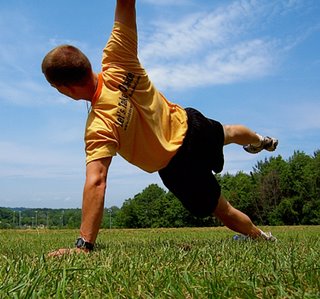 Is climbing the best conditioning for climbing?
Is climbing the best conditioning for climbing? Does a kayaker need to strength train?
What can I do to get prepared for my hiking trip?
Outdoor sports have certainly made it to the map. Despite the extreme classification of some of these sports, you could hardly call them marginal sports anymore. Apart from activities such as base jumping or deep sea diving, outdoor sports are gaining wider popularity and almost becoming mainstream.
As these extreme sports grow, so does the knowledge of how to become better at them. Paddle sports, rock climbing, and hiking are all wonderful activities and can be enjoyed even more by engaging in the proper conditioning.
Questions are often raised on the importance of conditioning for these sports as they are becoming more popular at all levels. One could think that as the extreme sports are often intense and total by nature, add-on conditioning would not be necessary. Now, you cannot get around the fact that the sport itself will not prepare you best for the sport. You cannot become a kayaker by lifting dumbbells, just like you cannot become a climber by doing push-ups. The connection between specific movement patterns and body’s ability to perform can only be produced in the particular movements of the sport itself. Only the sport itself trains the body in right ratio of different motor components. For example; rock climbing involves strength, balance, coordination, flexibility, endurance and power in a specific formula that can only be reached by climbing. However, the human body seems to require a diverse combination of stimulations to become an optimally performing specimen and that is where conditioning comes into the picture. This is supported by the fact that every single successful athlete dedicates a considerable amount of time and effort into programmed sport conditioning.
The focus here is on conditioning that is not performed within the sport activity itself, supplemental conditioning, if you will. As examples of conditioning within the sport, kayakers can condition themselves by paddling sprints of various durations, intensities and recoveries; climbers can perform reactive “dyno” training repeatedly for power and lock-out strength; hikers can focus on the performance specificity by carrying different loads with different speeds.
Supplemental conditioning consists of exercises that are designed to assist in following areas:
- Enhancing the strengths and weeding out the weaknesses of the performance.
- Optimizing body’s overall movement ability and performance capacity in order to enhance adaptation through sport specific training.
- Preventing injuries that might be caused by repetitive movement patterns.
Got chalk?
Tommi
PS: If human beings are perceived as potentials rather than problems, as possessing strengths instead of weaknesses, as unlimited rather that dull and unresponsive, then they thrive and grow to their capabilities. Bob Conklin